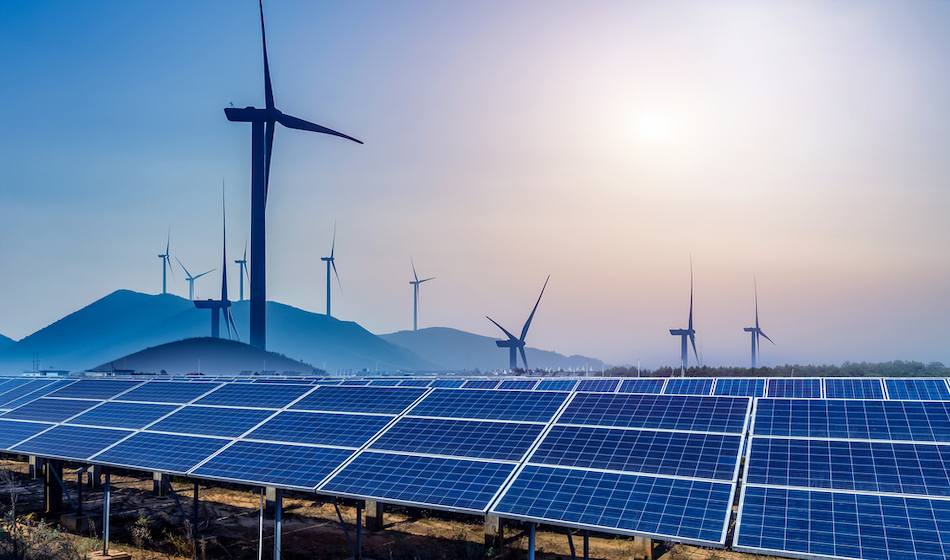
Sovereign wealth funds target India’s green energy push
Sovereign wealth funds (SWFs), investment vehicles managed by governments, are increasingly setting their sights on India’s ambitious green energy push. This convergence of interests presents a lucrative opportunity for both parties. India, the world’s fourth-largest emitter after China, the US, and the EU, seeks to significantly reduce its carbon footprint and transition towards a sustainable future. SWFs, on the other hand, are looking to diversify their portfolios beyond traditional assets like oil and gas and tap into the rapidly growing renewable energy sector.
India’s Green Energy Landscape: A Booming Market
India has set a target of installing 500 gigawatts (GW) of renewable energy capacity by 2030, a fivefold increase from its current capacity. This ambitious goal is driven by several factors:
- Favorable government policies: The Indian government has introduced numerous policies to incentivize renewable energy investments, including tax breaks, feed-in tariffs, and production-linked incentives.
- Falling solar and wind power costs: Technological advancements have significantly reduced the cost of solar and wind power, making them increasingly cost-competitive with traditional fossil fuels.
- Growing energy demand: India’s energy demand is projected to double by 2040, driven by rapid economic growth and urbanization. Renewable energy offers a clean and sustainable solution to meet this growing demand.
SWFs: A Source of Capital and Expertise
SWFs hold a combined $8.4 trillion in assets globally, making them a significant source of investment capital. Their interest in India’s green energy sector stems from several factors:
- Attractive returns: The Indian renewable energy market offers promising long-term returns, with the sector expected to grow at a compound annual growth rate (CAGR) of 11% between 2023 and 2028 [Invest India, Green Hydrogen Mission: An Engine for Growth].
- Portfolio diversification: SWFs are increasingly seeking to diversify their holdings away from oil and gas and invest in sustainable assets to align with global climate goals.
- Strategic partnerships: SWFs can bring valuable expertise and experience in managing large-scale infrastructure projects, which can be crucial for India’s ambitious renewable energy targets.
Examples of SWF Investments in India’s Green Energy Sector
- Abu Dhabi Investment Authority (ADIA) & Singapore Investment Corporation (GIC):Investment: $1.29 billion in Greenko in 2022 [Reference: Mint, “Singapore’s GIC, Abu Dhabi’s ADIA invest $1.29 billion in Greenko for renewable energy projects”(https://www.livemint.com/companies/news/greenko-eyes-700-mn-from-gic-adia-orix-founders-11677784689626.html)]Focus: This joint investment aims to support Greenko’s development of grid-scale battery storage solutions, crucial for integrating a higher share of renewables into the Indian power grid.
- Ontario Teachers’ Pension Plan (OTPP):Investment: $200 million in Azure Power in 2021 [Reference: Economic Times, “Canadian pension fund OTPP invests $200 million in Azure Power”(https://economictimes.indiatimes.com/topic/azure-power)]Focus: This investment supports Azure Power’s expansion of utility-scale solar projects, contributing to India’s renewable energy goals.
- Fortum (Finnish state-owned utility):Investment: Acquired a 49% stake in ReNew Power’s solar business for $810 million in 2020 [Reference: Reuters, “Finnish Fortum to buy 49% stake in ReNew Power’s solar business”(https://www.reuters.com/business/energy/fortum-cut-costs-investment-profits-fall-2023-11-02/)]Focus: This strategic partnership provides ReNew Power with additional capital and strengthens its position in the Indian solar energy market.
- Canada Pension Plan Investment Board (CPPIB):Investment: $200 million in Ostro Energy in 2019 [Reference: Business Standard, “CPPIB invests $200 million in Ostro Energy”(https://www.reuters.com/markets/deals/canadas-cppi-invests-205-mln-indian-co-indospaces-new-fund-2023-01-30/)]Focus: This investment supports Ostro Energy’s development of renewable energy projects across wind and solar sectors.
- Masdar (Abu Dhabi’s renewable energy company):Investment: $1.5 billion in India’s renewable energy sector by 2022 [Reference: The Hindu Business Line, “Masdar to invest $1.5 billion in India’s renewable sector by 2022″(https://www.prnewswire.com/ae/news-releases/masdar-to-develop-150mwac-solar-plant-in-angola-to-power-90-000-homes-and-boost-just-energy-transition-302003857.html)]Focus: Masdar has invested in various renewable energy projects in India, including wind farms and solar parks, contributing to the country’s clean energy transition.
Benefits and Challenges of SWF Investment
Benefits:
- Increased investment: SWF investments can provide much-needed capital to fund India’s ambitious renewable energy goals.
- Technological advancements: SWFs can bring in expertise and knowledge of cutting-edge renewable energy technologies.
- Job creation: The growth of the renewable energy sector will lead to job creation and economic development.
Challenges:
- Transparency and accountability: Concerns exist regarding the transparency of SWF investment practices and ensuring they align with India’s long-term energy security goals.
- Competition for resources: Increased SWF investment could lead to competition for land and resources, potentially impacting local communities.
- Policy stability: SWFs may be hesitant to invest in markets with uncertain or unpredictable regulatory environments.
Moving Forward: A Collaborative Approach
To ensure a mutually beneficial partnership, a collaborative approach is essential:
- Clear regulatory framework: The Indian government needs to establish a transparent and predictable regulatory framework to attract SWF investments while safeguarding national interests.
- Focus on local participation: Efforts should be made to ensure local communities benefit from renewable energy projects through job creation and skill development initiatives.
- Sustainable practices: SWF investments should be directed towards projects that promote sustainable development and minimize environmental impact.
Examples of Successful Collaborations:
- Greenko and Singapore’s GIC: Their partnership focuses on developing grid-scale battery storage solutions, a crucial element for integrating renewable energy into the grid. This collaboration leverages GIC’s financial muscle with Greenko’s expertise in the Indian renewable energy market [Global SWF, Greenko Bumps Up Indian Renewables Investment by GIC and ADIA].
- ReNew Power and Canada Pension Plan Investment Board (CPPIB): This collaboration provides ReNew Power with the capital to expand its utility-scale solar projects, contributing to India’s renewable energy goals. CPPIB benefits from the promising returns offered by the Indian renewable energy sector [Economic Times, CPPIB invests $200 million in Azure Power].
The Road Ahead: A Sustainable Future
The increasing interest of SWFs in India’s green energy sector presents a significant opportunity for both parties. By addressing the potential challenges through a collaborative approach, India can leverage SWF investments to:
- Accelerate its transition towards a sustainable energy future: Increased renewable energy capacity will help India reduce its carbon footprint and combat climate change.
- Attract cutting-edge technologies: SWF involvement can bring in expertise and knowledge of advanced renewable energy solutions, fostering innovation in the sector.
- Create a green economy: The growth of the renewable energy sector will lead to job creation, economic development, and a skilled workforce.
Looking beyond the immediate benefits, a successful partnership between India and SWFs can serve as a model for other developing nations seeking to transition towards clean energy.
Facts and Figures:
- India’s current renewable energy capacity: 166.4 GW (as of November 2022) [Ministry of New and Renewable Energy, India]
- India’s target for renewable energy capacity by 2030: 500 GW [Invest India, Green Hydrogen Mission: An Engine for Growth]
- Global SWF assets: $8.4 trillion [SWFI, Sovereign Wealth Funds: A Guide]
- Projected CAGR of India’s renewable energy market: 11% (2023-2028) [Invest India, Green Hydrogen Mission: An Engine for Growth]
References:
-
- Invest India: https://www.investindia.gov.in/team-india-blogs/indias-green-hydrogen-policy
- Global SWF: https://globalswf.com/news/sovereign-investors-help-bolster-india-s-green-energy-revolution
- Business Standard: https://globalswf.com/news/gic-prepares-surge-in-renewables-investment
- Economic Times: https://m.economictimes.com/industry/renewables/azure-power-india-seeks-more-time-to-file-audited-results/articleshow/98072551.cms
- Ministry of New and Renewable Energy, India: https://mnre.gov.in/
- SWFI: https://www.swfinstitute.org/
